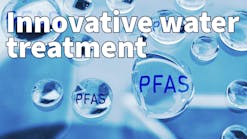Source: Cabot Norit Activated Carbon
BOSTON,APRIL 17, 2018 -- Cabot Corporation (has been selected as the new activated carbon supplier for point-of-entry treatment systems (POETS) for the Town of Hoosick, New York. The New York State Department of Environmental Conservation (NYSDEC) has chosen Cabot's HYDRODARCO® 4000 granular activated carbon, the leading activated carbon for the removal of perfluorooctanoic acid (PFOA) contamination, to remove harmful PFOA contamination from the Town's private wells that supply drinking water to residents and businesses.
Groundwater testing for toxic manufacturing chemicals, including PFOA, was recently conducted in Hoosick Falls with oversight from the NYSDEC. Arcadis, the engineering firm managing the POETS project, tested several activated carbons from different suppliers and found that HYDRODARCO 4000 activated carbon was the most effective media at removing these harmful pollutants during the expected lifetime of the POET systems.
"Cabot Norit Activated Carbon is a technology leader in global water purification, and our HYDRODARCO 4000 activated carbon is optimized to remove PFOA more efficiently and effectively than other activated carbons available today," said David Flannery, global marketing manager, Water Purification Segment, Cabot Corporation. "Our activated carbon products not only help towns like Hoosick provide their citizens with safe, reliable drinking water in their homes, schools and businesses, but they also meet the most stringent global requirements."
PFOA and perfluorooctane sulfonate (PFOS), the two most commonly recognized types of perfluoroalkyl substances, are manmade compounds used in a variety of products such as plastics, firefighting foams, water resistant fabrics and grease resistant coatings. Once in the environment, these chemicals are persistent, toxic and pose risks to human health. Recently, the U.S. Environmental Protection Agency established a human health advisory level (HAL) for the combined concentrations of PFOA and PFOS at 70 parts per trillion in drinking water.



